ORIF
1. Principles
General considerations
In C1 fractures, there is fracture of the fibula above the level of the syndesmosis. It is usually a simple fracture. This is associated with
a rupture of the interosseus ligament between the distal tibia and fibula (syndesmosis), and the interosseous membrane up to the level of the fracture.
The medial side fails first in tension, either through the deltoid ligament (C1.1) or through a transverse avulsion fracture of the medial malleolus (C1.2). Very rarely, there may also be a fracture of the Volkmann's triangle (C1.3).
These are unstable injuries and the integrity of the syndesmosis must be restored.

Teaching video
AO teaching video: Tibia and fibula—Malleolar fracture (44-C)—ORIF using an LCP One-Third Tubular Plate with a lag screw and a positioning screw
2. Order of fixation
The crux of treatment is the correct reduction of the lateral malleolus and fibula. Length alignment and rotation must be restored otherwise it will not be possible to reduce the talus, the syndesmosis or the Volkmann’s triangle (if present).
Simple diaphyseal fibular fracture with rupture of the deltoid ligament
- The fibular shaft is brought out to length and fixed
- The integrity of the syndesmosis is restored
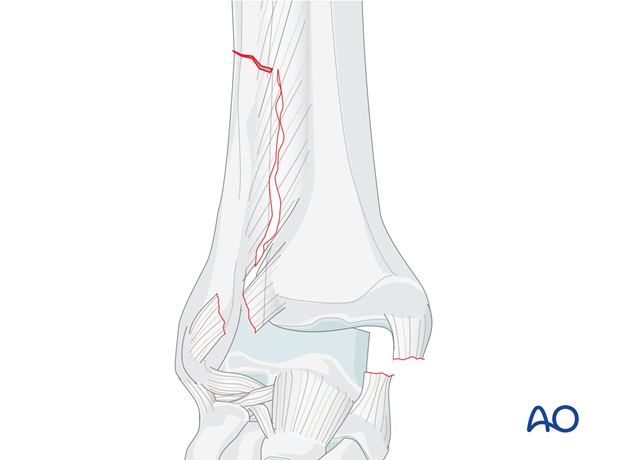
Simple diaphyseal fibular fracture with fracture of the medial malleolus
The choice of fixing the medial or lateral side first may be guided by the surgeon's preference, but the ankle joint in these fractures is often very unstable. The stability is dramatically improved once the medial fracture is fixed (if present), so we would suggest the following sequence:
- The medial fracture is fixed
- The fibular shaft is brought out to length and fixed
- The integrity of the syndesmosis is restored
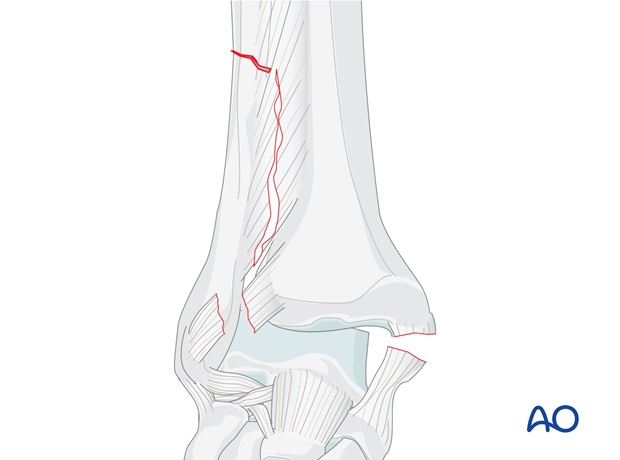
Simple diaphyseal fibular fracture with fracture of the medial and posterior malleolus
The choice of fixing the medial or lateral side first may be guided by the surgeon's preference, but the ankle joint in these fractures is often very unstable. The stability is dramatically improved once the medial fracture is fixed (if present), so we would suggest the following sequence:
- The medial fracture is fixed
- The fibular shaft is brought out to length and fixed
- The integrity of the syndesmosis is restored
- The Volkmann's fragment is reduced and fixed
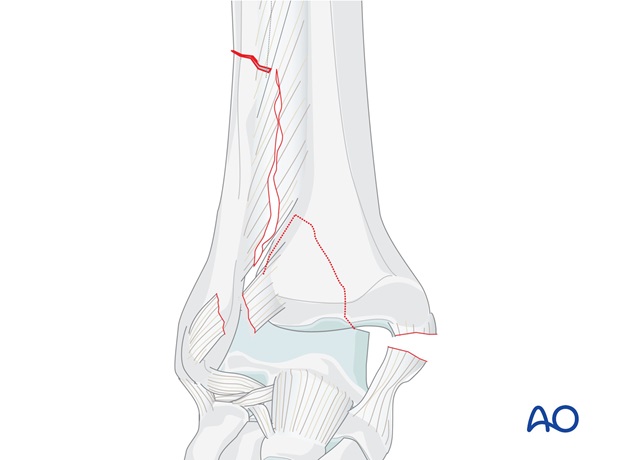
3. Patient preparation
Depending on the approach, the patient may be placed in the following positions:
- Supine position
- Lateral position
- Supine position, figure-of-four
- Prone position (preferred for posterior fractures)
4. Approaches
Approach to the medial fracture
A medial fracture is addressed through the medial approach.
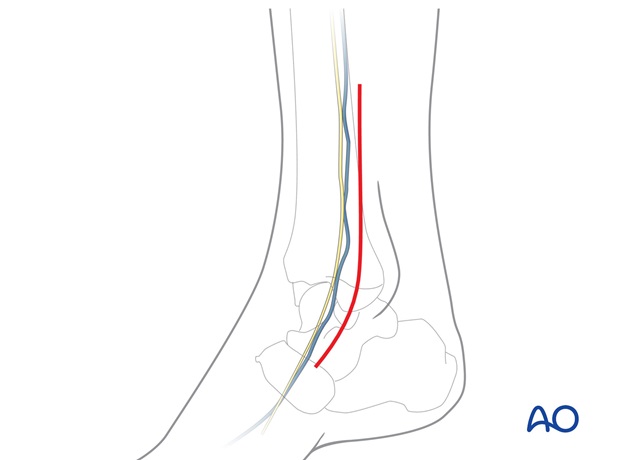
Approach to the fibular shaft fracture and syndesmosis
A direct lateral approach is used for the fibular shaft fracture. The level of the fracture dictates the level of the incision required. The distal end of the incision may need to be extended for insertion of positioning screws, or a small separate incision may be used.
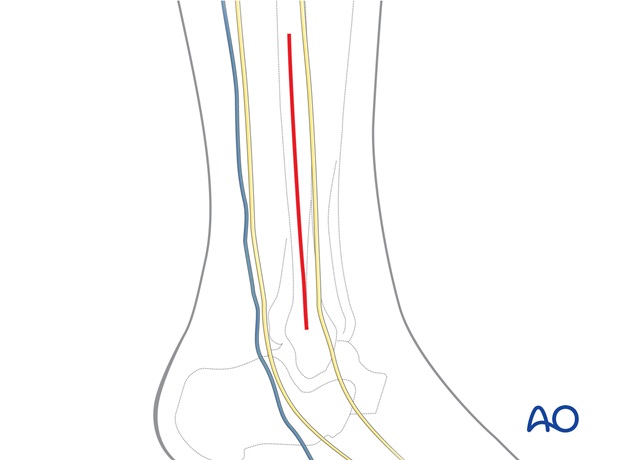
Approaches to the Volkmann's triangle
If direct reduction and fixation of the Volkmann's triangle is chosen, a posterior lateral approach is used.
This incision may be extended proximally to allow access and fixation of the fibular fracture if it is relatively low. Alternatively, and more commonly, the fibular fracture is relatively high, and is approached through a separate lateral incision placed more proximally.
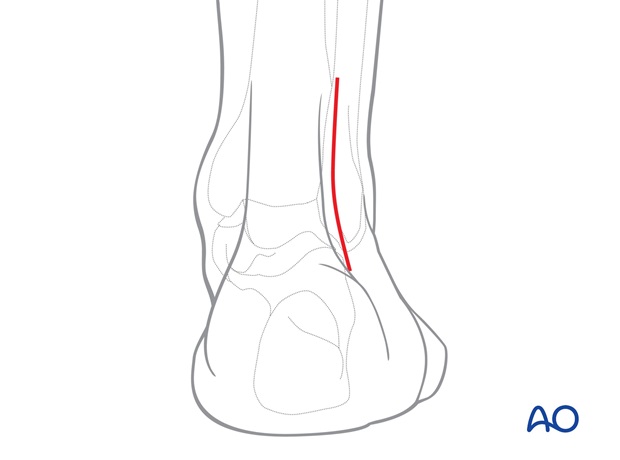
Alternatively, the Volkmann's fragment may be addressed with indirect reduction and anterior screw fixation through additional anterior stab incisions.
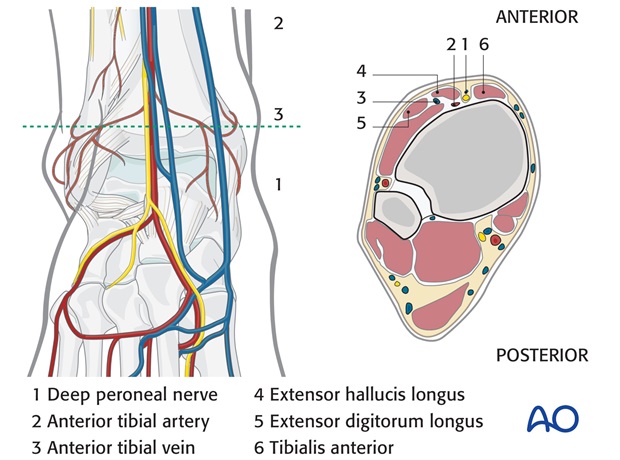
5. Fixation
Medial malleolar fracture (if present)
The ankle joint in these fractures is often very unstable. The stability is dramatically improved once the medial fracture is fixed (if present).
Most medial fractures are fixed with lag screws, which should be inserted perpendicular to the plane of the fracture.
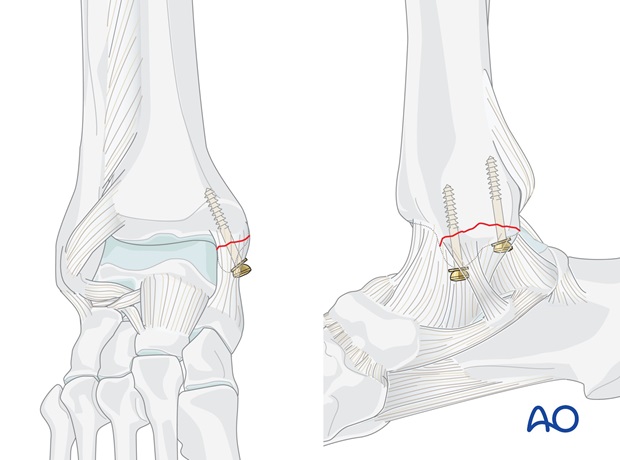
If the fragment is too small or in poor quality bone, K-wires and cerclage compression wiring may be better.
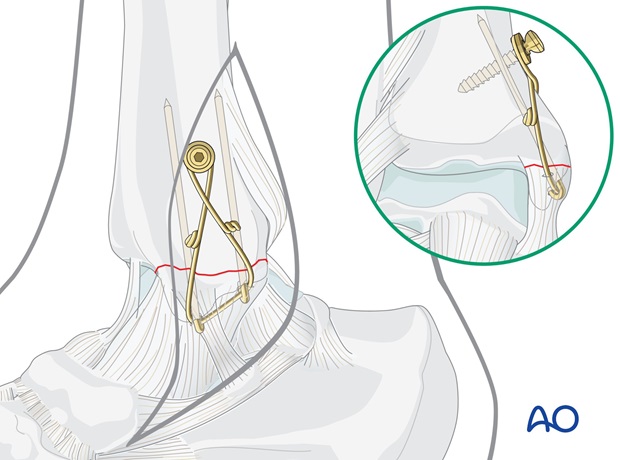
Fibula
The fibular fracture is often oblique or spiral so it may be reduced anatomically and fixed with a lag screw(s) and neutralization plate.
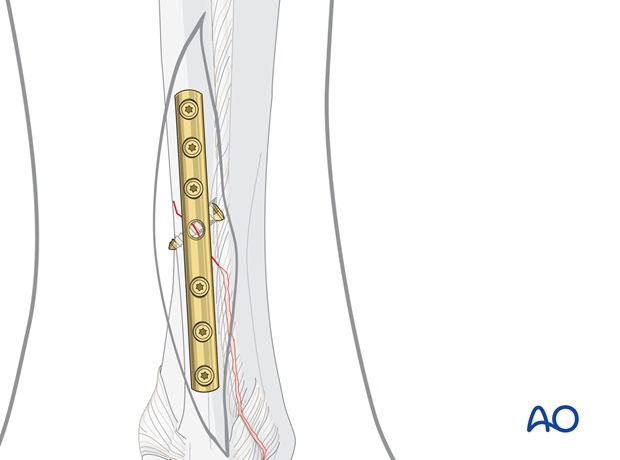
If it is a transverse fracture it may be best fixed with a compression plate
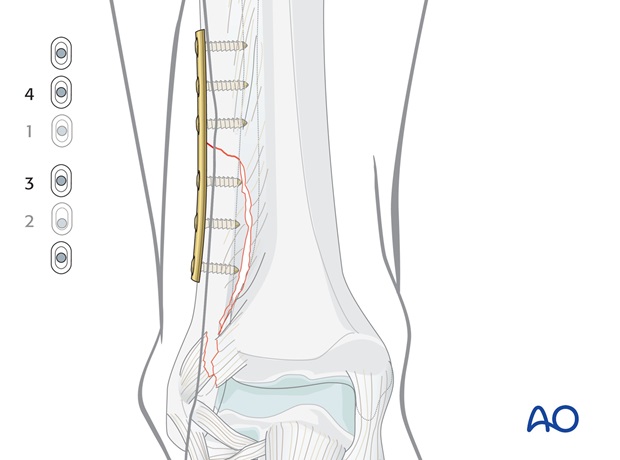
Syndesmosis
After the fibula has been fixed, the stability of the syndesmosis is tested with a hook. In suprasyndesmotic fractures, the syndesmosis is usually disrupted, and must be stabilized. This may be achieved. The integrity of the syndesmosis is restored and stabilized with one or two positioning screws. These may be inserted through the distal holes in the plate or separately from the plate.
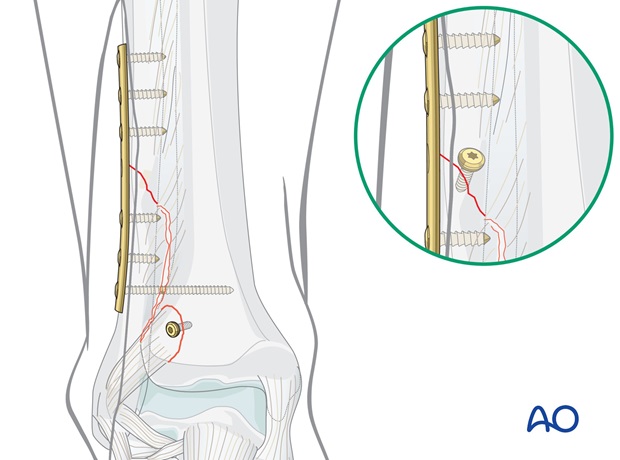
Volkmann's fragment (if fractured)
The Volkmann's fragment may be addressed under direct vision through a posterolateral approach.
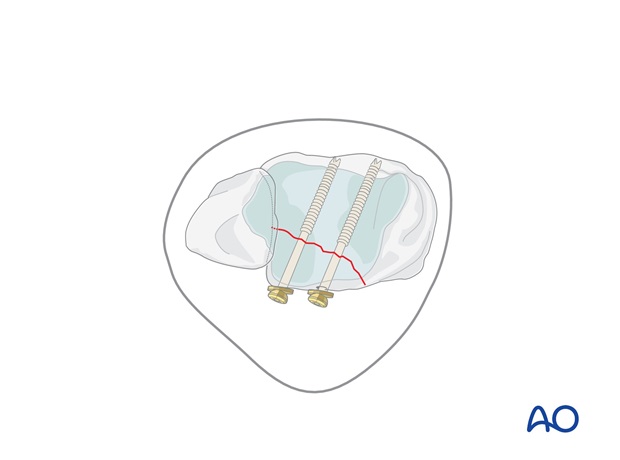
If indirect reduction of the Volkmann's fragment is chosen, sagittal lag screws are inserted through separate stab incisions.
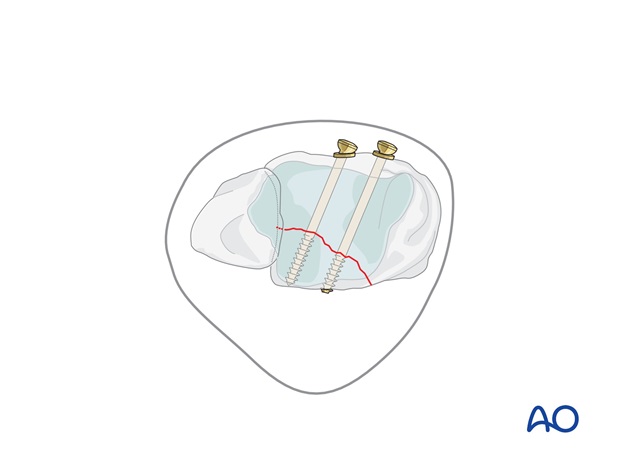
6. Check of osteosynthesis
Check the completed osteosynthesis by image intensification.
Make sure the intra articular components of the fracture have been anatomically reduced.
Make sure none of the screws are entering the joint. This needs to be confirmed in multiple planes.
7. Postoperative treatment of suprasyndesmotic malleolar fractures
Postoperatively, the joint is held in neutral position by a splint.
If drains are used, they are removed after 24-48 hours. The patient is mobilized with crutches depending on the swelling of the soft tissues.
Postoperative CT control of both ankles is recommended if any syndesmotic incongruence is suspected or if a positioning screw was inserted; special notice is taken of the rotation of the fibula in the syndesmosis, compared with the uninjured side.
Joint motion is allowed and encouraged during physiotherapy. Weight bearing of 20-30 kg when the foot is unsupported. Full weight bearing may be possible using a cast, or an ankle brace, but should not be allowed when a positioning screw is used because of the risk of implant failure.
The positioning screw may be removed after 8-10 weeks.













